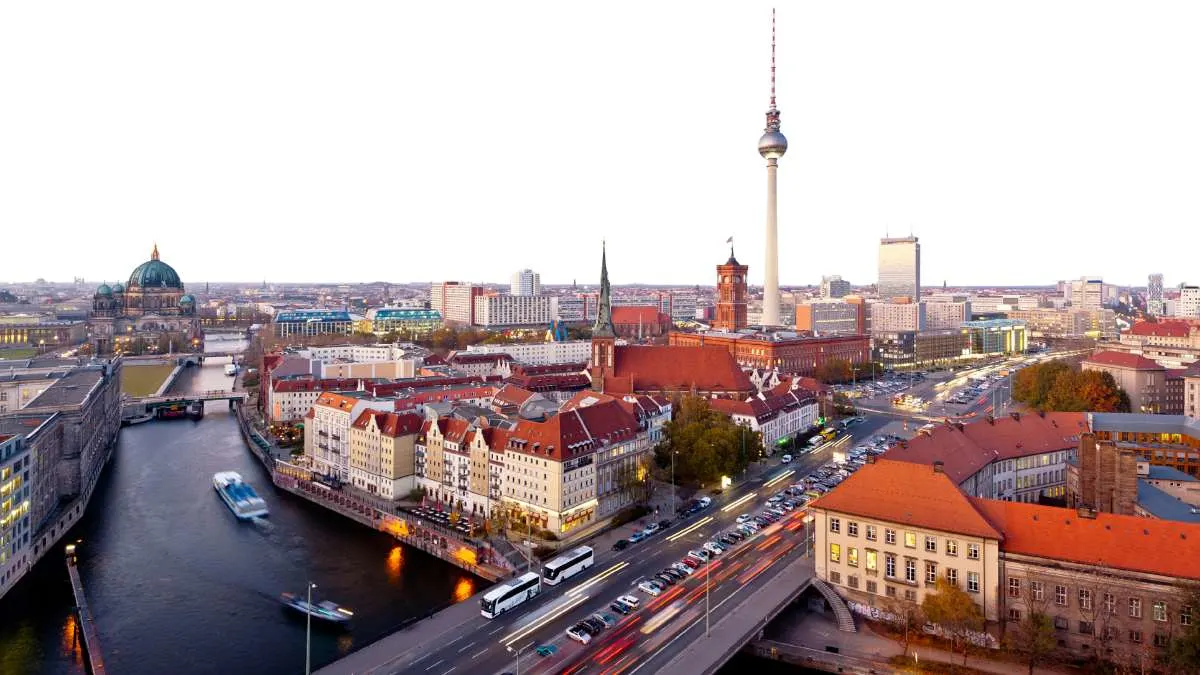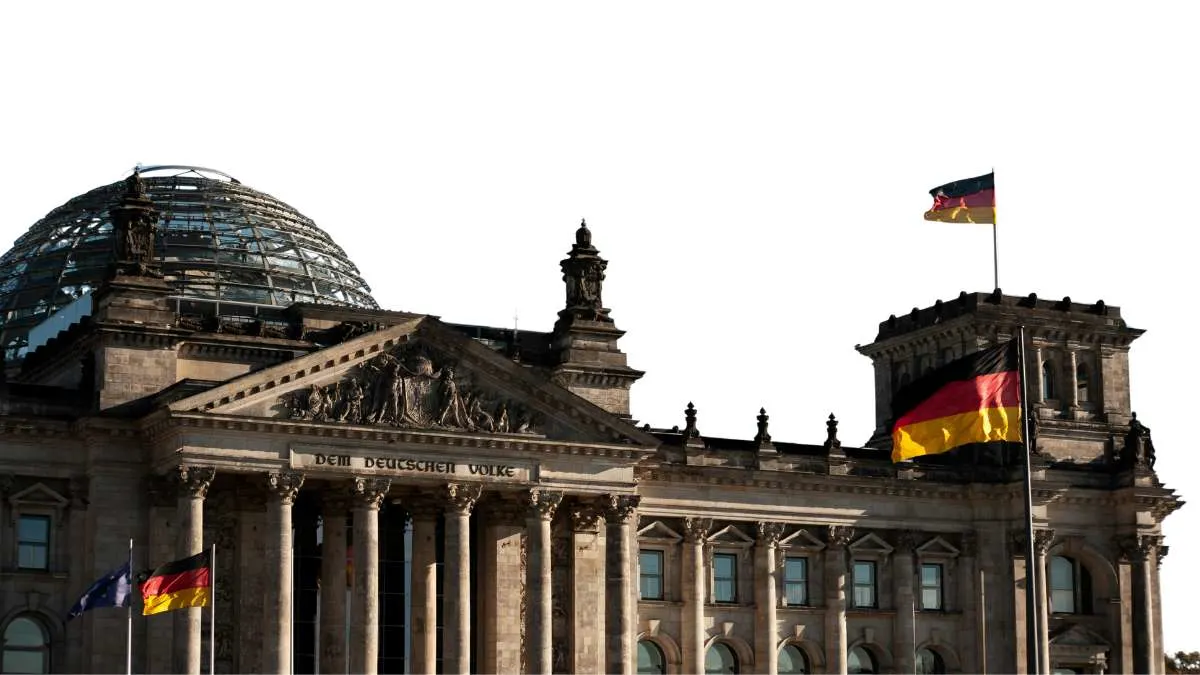Berlin, the capital of Germany, is a city where history, culture, and modernity converge. It’s a place where the past is not only remembered but also celebrated, where art flourishes, and where cutting-edge technology meets laid-back vibes.
Travel To Berlin, contemporary art galleries, vibrant nightlife, and unique architecture, this city invites travelers to discover its many facets.
With so much to see and do, is it worth the time and money to visit this fascinating city? Let’s dive into the top reasons why Berlin should be on your travel list and explore what makes it a must-visit destination.
Is Berlin Travel Worth It?
Berlin has earned a reputation as one of Europe’s most exciting and dynamic cities. So, is it worth visiting? Absolutely! Berlin offers a rare combination of historical depth, modern innovation, and vibrant culture, making it an unmissable destination for travelers. Whether you’re walking along the Berlin Wall, exploring its world-class museums, or experiencing its legendary nightlife, Berlin has something unique to offer.
Here are several compelling reasons why traveling to Berlin is worth it:
1. Rich History and Iconic Landmarks
Berlin is a city deeply shaped by its history. From the Prussian Empire to its division during the Cold War, Berlin has witnessed some of the most pivotal moments of the 20th century. No visit to Berlin is complete without experiencing its historical landmarks, such as the Berlin Wall Memorial, Brandenburg Gate, and Checkpoint Charlie. These sites offer insight into Berlin’s tumultuous past and the struggle for freedom and unity.
The Berlin Cathedral, Reichstag Building, and Holocaust Memorial also stand as powerful symbols of both Germany’s history and its ability to rebuild and reinvent itself. Each landmark in Berlin tells a different chapter of the city’s long and storied history.
2. A Hub for Art and Culture
Berlin is one of Europe’s foremost cultural capitals, attracting artists from all over the world. The city is home to some of the best art museums, including the world-renowned Museum Island, a UNESCO World Heritage site. Here, visitors can explore the Pergamon Museum, the Altes Museum, and the Bode Museum, all of which house incredible collections of art, archaeology, and ancient history.
Berlin is also a leader in contemporary art. The East Side Gallery, a stretch of the Berlin Wall transformed into an open-air gallery, showcases political and social themes through vibrant street art.
The city’s many galleries, independent spaces, and cultural hubs, such as the KW Institute for Contemporary Art, continue to push boundaries and offer something for every art lover.
3. Vibrant Nightlife and Music Scene
Known for its eclectic and vibrant nightlife, Berlin has earned a reputation as a party destination. The city is home to some of the best nightclubs in the world, including Berghain, a legendary techno club that has become a symbol of Berlin’s underground music culture. But Berlin’s nightlife goes beyond just clubs; from cozy bars in Kreuzberg to chic rooftop lounges, there’s a venue to suit every taste.
Berlin is also a city where music festivals thrive, with events like Lollapalooza Berlin and the Berlin Festival celebrating diverse genres and attracting international crowds.
Whether you’re into techno, house, indie rock, or jazz, Berlin has a dynamic music scene that never sleeps.
4. Diverse Neighborhoods
Berlin’s neighborhoods each have their own distinct personality. From the trendy and artsy areas of Kreuzberg and Neukölln to the elegant district of Charlottenburg, Berlin is a city of contrasts. The area around Prenzlauer Berg is known for its bohemian vibe, while Mitte is the heart of the city, where you’ll find historical sites alongside modern shops, cafes, and restaurants.
If you’re a foodie, head to Markthalle Neun in Kreuzberg or the Turkish market along the Maybachufer canal. Berlin’s food scene is as diverse as its population, offering international cuisine, local German specialties, and innovative street food.
5. Affordable Travel Destination
Compared to other European capitals, Berlin is relatively affordable, making it an attractive option for budget-conscious travelers.
Accommodations range from budget hostels to luxury hotels, and there’s no shortage of affordable dining options, from street food stalls to mid-range restaurants. Public transportation in Berlin is also well-connected and reasonably priced, making it easy to get around the city.
6. Green Spaces and Parks
Berlin isn’t just a bustling metropolis; it also offers plenty of green spaces to relax and enjoy nature. Tiergarten, Berlin’s largest park, is located right in the city center and provides a peaceful escape from the urban hustle. Tempelhofer Feld, a former airport turned park, is another popular spot for locals to cycle, picnic, or fly kites. The city’s parks and gardens offer a perfect balance to Berlin’s urban energy.
7. Sustainability and Eco-Friendly Culture
Berlin is one of the most eco-conscious cities in Europe. The city promotes sustainable living through initiatives like bike-sharing programs, eco-friendly public transportation, and a growing trend of sustainable architecture.
Berlin’s residents are known for their commitment to green living, and this is reflected in the city’s environmental efforts, including its many green spaces and recycling programs.
Read Next; Travel To Barcelona | A City of Sun, Culture, and Flavor
Travel to Berlin: Comparing Authoritative Sites:
When considering a trip to Berlin, it’s helpful to see what authoritative travel sources say about the city. Here’s how a few well-known websites describe Berlin:
-
Lonely Planet: Lonely Planet describes Berlin as a city of reinvention, where history and modernity meet. They highlight the city’s remarkable historical landmarks, art scene, vibrant nightlife, and affordable prices as top reasons to visit. Their guide also provides practical tips for navigating Berlin’s neighborhoods and must-see attractions, ensuring travelers get the most out of their visit.
-
TripAdvisor: TripAdvisor showcases Berlin as a destination for cultural exploration, with numerous recommendations for museums, galleries, and historical sites. They also emphasize Berlin’s culinary scene and vibrant nightlife. User reviews provide real-life experiences, helping visitors decide which attractions and experiences are worth their time.
-
The Culture Trip: The Culture Trip delves into Berlin’s status as a cultural hub, with a focus on its art, music, and food scenes. They provide a comprehensive guide to the city’s best neighborhoods, museums, and events. Their website also features unique experiences, such as street art tours and local food tours, for travelers who want to discover the hidden gems of Berlin.
Berlin is a city that offers something for every traveler.
Visit Berlin:
Berlin is a city unlike any other. It’s a place where history, art, and culture come together in a vibrant and dynamic way. From iconic landmarks like the Brandenburg Gate and the Berlin Wall to contemporary attractions like the East Side Gallery and thriving music scene, there’s no shortage of things to see and do.
The city’s diverse neighborhoods, affordable pricing, and rich cultural offerings make it a must-visit destination for any traveler.
Plan Your Trip to Berlin Today!
Ready to explore one of Europe’s most dynamic cities? Plan your travel to Berlin now and immerse yourself in the city’s rich history, vibrant culture, and incredible food and nightlife. Whether you’re visiting for a weekend or an extended stay,
Berlin is sure to leave you with unforgettable memories. Book your tickets today and get ready for an adventure in Berlin!
FAQs:
Q1: What is the best time to visit Berlin?
The best time to visit Berlin is during the spring (April to June) and fall (September to October) when the weather is mild, and the city is less crowded. Summer is also popular, but it can be busy with tourists.
Q2: Is Berlin an expensive city to visit?
Berlin is relatively affordable compared to other major European cities. Accommodation, food, and transportation are reasonably priced, and there are plenty of free or low-cost attractions to enjoy.
Q3: What are the must-see attractions in Berlin?
Top attractions include the Berlin Wall Memorial, Brandenburg Gate, Checkpoint Charlie, Museum Island, and the Holocaust Memorial. Don’t miss a visit to the East Side Gallery, where the Berlin Wall is covered in vibrant street art.
Q4: How do I get around Berlin?
Berlin has an excellent public transportation system, including the U-Bahn (subway), S-Bahn (light rail), buses, and trams. The Berlin WelcomeCard offers unlimited access to public transport and discounts at major attractions.
Q5: Is Berlin a safe city for tourists?
Berlin is generally considered safe for tourists. However, like any major city, it’s essential to stay aware of your surroundings and keep an eye on your belongings, especially in crowded areas and on public transport.


